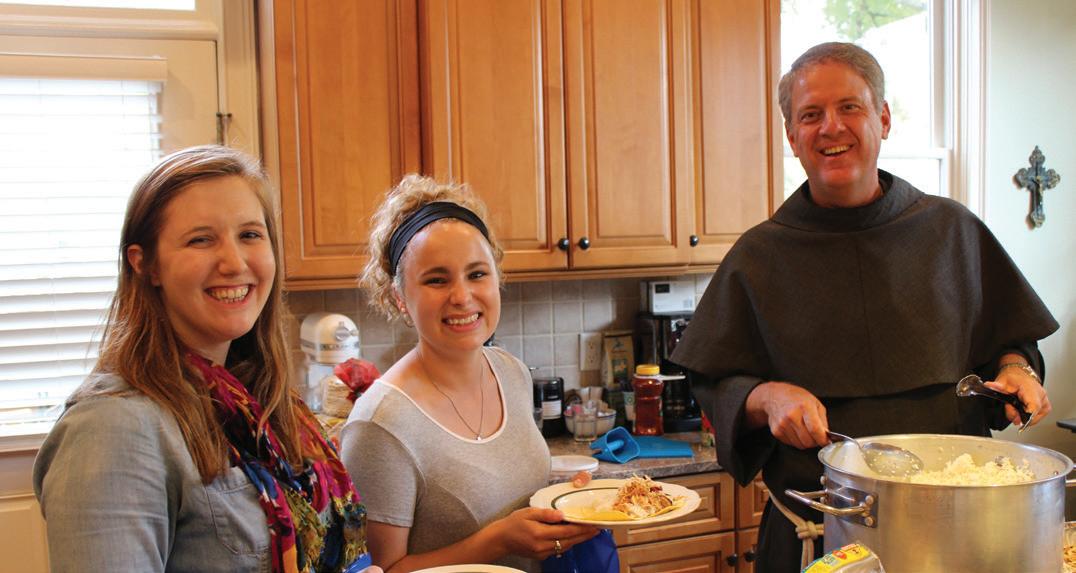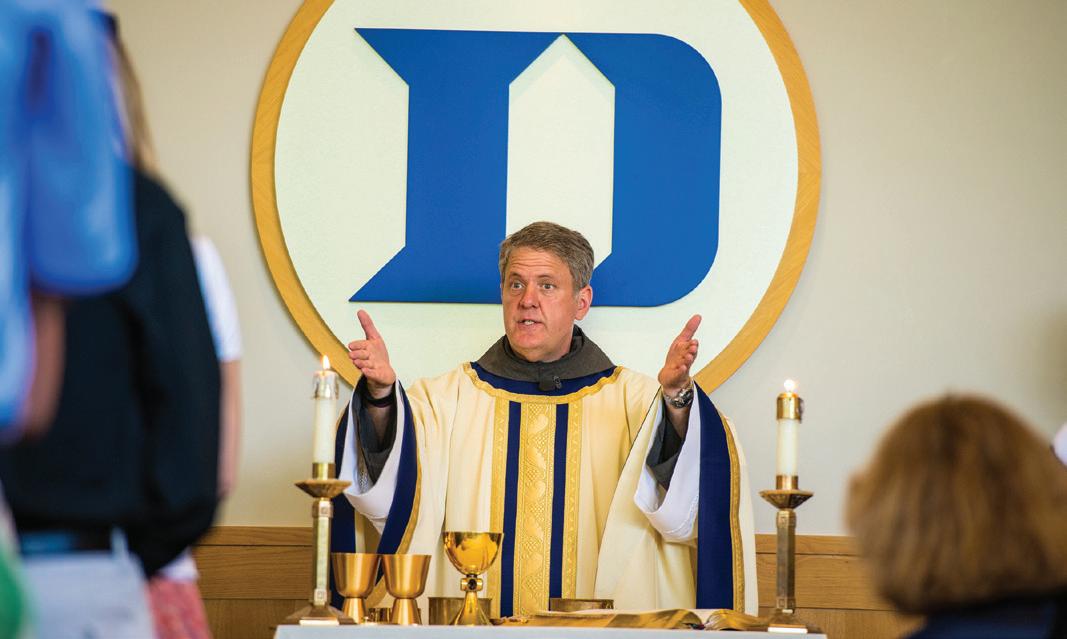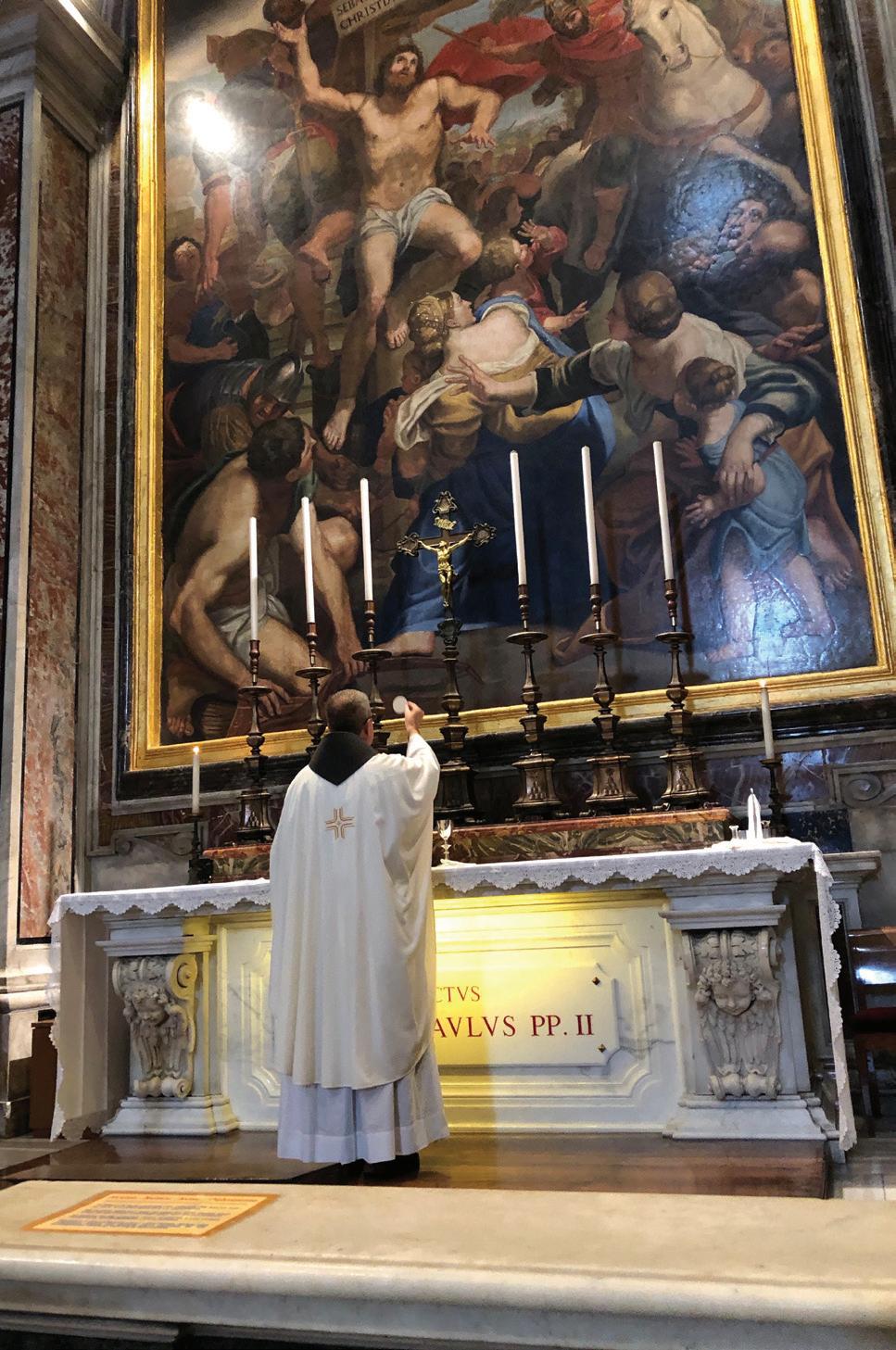
5 minute read
Followers of St. Francis
By Janice Lane Palko
Being a Friar a ‘Powerful Witness to Unity’
Advertisement


“We live in a fractured world that keeps trying to ask itself how we can be less fractured. As a Franciscan, I have no control over who I live with. I’m assigned to live in a community with other friars. We have to find a way to love each other, and not just love each other but live with each other,” says Father Michael Martin, OFM Conv.
St. Francis’ witness has spoken to many people throughout the centuries. Some have related to his love of nature, while others have embraced his simplicity, and still others have admired his detachment from worldly goods. Father Michael Martin, OFM Conv, cites another aspect of Franciscan spirituality that he believes we could all use these days: unity.
“Religious life, at least in our community, is one of the most, if not the most, powerful witness to unity. We live in a fractured world that keeps trying to ask itself how we can be less fractured. As a Franciscan, I have no control over who I live with. I’m assigned to live in a community with other friars. We have to find a way to love each other, and not just love each other but live with each other,” says Father Michael, who is the director of the Duke Catholic Center at Duke University in Durham, North Carolina, and resides with three other friars.
EARLY STIRRINGS OF THE SPIRIT
Father Michael, 59, grew up in Baltimore in a Catholic family. “My dad’s side of the family was Catholic, but my mother’s side was Lutheran,” he says. “My mom converted to marry my dad, who is one of the best Catholics I know. We went to church on Sundays. I never felt like we were ‘uber Catholic,’ but faith was very much a part of our identity.”
He first thought about becoming a priest when he was in middle school. “The pastor of my parish was a fine man, very rooted in Jesus. He was a horrible administrator—he couldn’t organize a sock drawer, but everyone loved him, and he lived his faith very powerfully. He taught me how to pray,” says Father Michael. “Once I went to high school at Archbishop Curley, which the friars have administered and taught at since its opening in 1961, I felt a connection to them.”
By his senior year, he had already applied to colleges, had a girlfriend, and was ready to launch his adult life, but he couldn’t deny his calling. “I found that I couldn’t shake the idea of becoming a priest,” Father Michael recalls. “I felt like I wouldn’t allow myself to think about it. Once I gave myself permission to think about it, however, it became clear to me that this was what I needed to do. I think I was just afraid of what it meant. And what it would cost.”
Father Michael entered the seminary in Ellicott City, Maryland, right out of high school at 17 and made his

Father Michael celebrates Mass in St. Peter’s Basilica at the tomb of St. John Paul II. first vows at the end of that year. After that he went to St. Hyacinth College and Seminary in Granby, Massachusetts, and then taught for a year at the Franciscan high school in Buffalo, New York, before taking his final vows.
Father Michael then was sent to Rome for three years to study theology at the Pontifical Theological Faculty at St. Bonaventure–The Seraphicum.
“It was exciting to be in Rome studying Catholic theology then. This was 1985–1988, pre-computers and Internet,” Father Michael remembers. “The Vatican would issue a document in the morning, and we’d have it and be discussing it by lunch. You’re reading Paul’s letter to the Romans, and you’re there in Rome.”
NURTURING FAITH FOR FUTURE GENERATIONS
After being ordained a deacon in Rome, he spent a year at St. Adalbert’s Parish in Queens, New York, where he oversaw religious education. He was ordained a priest in June of 1989 and was sent to the Franciscan high school in Buffalo, where he served as the director of admissions for five years and did some teaching as well as coaching basketball. While there, he attended Boston College during the summers, earning a master’s in education administration.
In 1994, he returned to where it all began, Archbishop Curley High School, his alma mater, serving as the admissions director for two years, principal for five, and then president of the school for nine years. “It was a pleasure to lead the school that had made such a difference in my life,” he says.
In 2010, his provincial asked him to consider an open position at Duke University, and he was hired. “We are a full-service Catholic campus ministry. Although we are not a parish, we function like one for students, both undergraduates and graduates,” says Father Michael. “Catholics are the largest single denomination on campus. About 23 percent of the student body (approximately 2,500 students) is Catholic.”
Father Michael reflects on and discusses vocations with students on a regular basis. “Often students will say they would never consider being a friar [or joining the clergy or other religious orders] because they want to be married,” he says. “I tell them that I wanted to be married, too, but that is the story of every call. In Scripture, it always shows the Lord asking, ‘Why don’t you come do this instead?’ I love the life that I’ve had and that I have. I never see it as God has some big plan all set and that he expects us to play ‘20 Questions’ and figure out what he already knows. I don’t believe God works that way. He allows us to flourish in a lot of different ways as long as we’re open to allowing our lives to give him glory. I hope that my life has done just that.”

ST. ANTHONY BREAD
The National Shrine of St. Anthony is located in Cincinnati, Ohio. Consecrated in 1889, it includes a first-class relic of St. Anthony and serves as a center for daily prayer and contemplation.
The Franciscan friars minister from the shrine. To help them in their work among the poor, you may send a monetary offering called St. Anthony Bread. Make checks or money orders payable to “Franciscans” and mail to the address below.
Every Tuesday, a Mass is offered for benefactors and petitioners at the shrine. To seek St. Anthony’s intercession, mail your petition to the address below. Petitions are taken to the shrine each week.
viSit our webSite to:
StAnthony.org
mAil poStAl communicAtionS to: St. Anthony Bread 1615 Vine St. Cincinnati, OH 45202-6498





